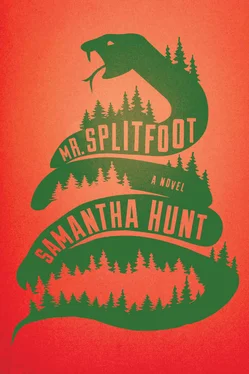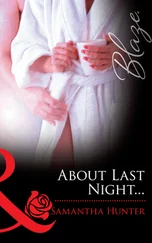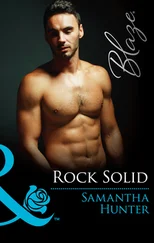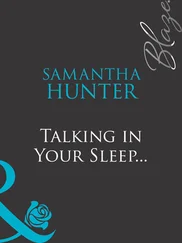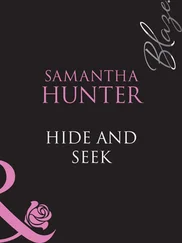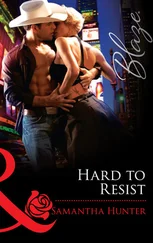She reaches deeper into the duffle, anticipating a cobra strike, a severed arm, Mr. Bell’s dark and throbbing soul. Instead she pulls out a broken watch and a jar of black nail polish. She pulls out a plastic yellow comb and a box of waterproof matches.
There’s a sigh from the house.
She looks behind her again. “Nat?” Nat does not answer.
She returns to the dark cavern of the duffle. The violation is as clear as if she were digging not through his luggage but into his mouth and throat, touching his lungs and liver. Ruth finds a tiny, precise, portable set of tools. The hammer is no bigger than her foot. She examines the screwdriver and wrench, handling each item carefully, delicately. There are undershorts. There are oxfords and socks. There is a spiral-bound sketchbook. The cover is worn, and there’s an old photo taped to its back side. An image of a woman, a hippie whose long brown, beaded hair obscures her face. Ruth opens the book. On the first page, there’s a pencil illustration. It’s a series of points linked by a network of lines. Same thing on the next page, delicate lines moving out from ten or twelve heavier nodes, like flight patterns out of twelve different cities, only there’s no map or picture to explain what connections are made between the dots. A chaotic spider web. Ruth flips through the book. The same illustration has been drawn on every single page.
“What’re you doing?”
The book falls to the floor with a brutal slap. “Jesus.” But it’s just Nat. “You scared me to death.”
“What are you doing?”
“Snooping through Mr. Bell’s stuff.”
“What’d you find?”
“Check this out.” She stoops to pick the sketchbook up again, opening it for Nat. “Same picture on every single page.”
Nat fingers the pencil lines. “What is it?” He takes the book in hand, studies it. He looks up to Ruth with the skewed mouth of a stroke victim, looks back to the book, then up to Ruth’s face, eyes troubled on her.
“What?”
Nat turns her so that they are shoulder to shoulder in front of the large mirror. He holds the open sketchbook in front of his own face. Ruth meets her eyes in the mirror. Side by side with Mr. Bell’s drawing, the pattern locks into familiarity. Dots, lines, paths. Mr. Bell has obsessively replicated and drawn the explosions that scar Ruth’s face. She’s twinned with the illustration on the page.
A door slams shut downstairs. They move with the quiet swiftness of children trained in self-preservation. They collect the spilled items and jam them back into the duffle, threading the rivets, locking the clamp.
“Hello?” he calls from the staircase.
“Mr. Bell,” Ruth says flatly, no trace of her terror. “We were just looking for the bathroom. Hope that’s OK.” Nat and Ruth take up casual posts in the hallway outside his door.
“Of course.” He smiles to see them.
Ruth does not smile. “Whose house is this?” Her voice is flat.
“Yes. Umm. My mom’s?”
“So where’s the bathroom?”
Mr. Bell opens the last door. It’s a closet. Then the next. The hospital bed. Then the next. “Right here. Of course. Always has been.”
“Where’s your mom at?” Ruth asks.
He sticks a hip out, resting one hand on it. He thinks a long while. “Uh, Jersey. She retired to Jersey.” Big smile.
And left her sherbet behind.
Nat changes into an outfit selected by Mr. Bell. A pale blue button-up shirt with just a glimpse of a black lanyard cord showing around his neck. His pants are woven to a silver sheen. He wears his own work boots. Mr. Bell hadn’t thought to purchase shoes. Nat’s hair is brushed.
For Ruth, Mr. Bell selected a celery cover-up. The tag inside says MADE IN INDIA and another one GOODWILL STORE $4. Her bra shows through the fabric. The gown drags on the floor. It smells like wet wool. She sits next to Nat on the couch. They look like seven-year-olds impersonating Floridian retirees. Neither of them leans back. Even Mr. Bell is nervous; even he seems young. “I’ll wait in the foyer.”
Finally there’s a knock. “Please. Let me take your coats,” and then, “What a lovely kerchief. Welcome.” Mr. Bell leads an older married couple into the living room. Perhaps they’re here to contact someone before they themselves pass on. They sit opposite Nat and Ruth. The man rubs his palms on his thighs. It’s embarrassing to admit one believes the dead can speak. His wife twists his wrist like the accelerator on a motorcycle, and the whole premise suddenly strikes Ruth as bizarre. Why do the living assume the dead know better than we do? Like they gained some knowledge by dying, but why wouldn’t they just be the same confused people they were before they died?
Nat and Ruth quickly realize they should have waited in the kitchen until the audience was assembled. Next time.
Another knock. Two more couples, same as the first: white and nervous. No one speaks. The people steal glances at Nat and Ruth, glowing, toxic child brides. One of the couples seems to have arrived straight from a punk concert. Her skin is gray from cigarettes. His hairdo is as big as hers. In opposition, the next couple looks like health nuts, comfortable shoes, thin as marathoners, people who vote. Everyone has dead people.
Mr. Bell comes in last. His movements belong to a man who doesn’t need sleep. He takes a long time pulling the nylon curtain across a bay window. He then raises one brow, meaning, I have done my part to separate these people from their money. Now it is up to you, partner.
Nat looks like a fine blue thing. Ruth gets to work before thought can catch up. She raises her hands, holding the sun. “Great unseen force, remove all obstructions between this world and theirs. Lift the veil so that we might receive guidance and the gift of spirit here with us tonight.” She holds her pose for just a moment. Such antics come naturally after life with the Father. Mr. Bell nods. And she’s practiced. “Close your eyes.” Their movements are swift, each of the six obey her readily. She takes Nat’s hands. “Ready?” His chin is already lolling, saliva gathering between his lips. But what’s the point of Nat’s rabies routine if everyone’s eyes are closed? A misstep. “Open your eyes, please.” She focuses her gaze, pinning down the air between them, urging it to become charged. “Hello?” she asks gently, politely. She doesn’t name it Mr. Splitfoot in front of strangers who might imagine the devil. That’s not what Ruth thinks. For her, Mr. Splitfoot is a two that is sometimes a one, mothers and their children, Nat and Ruth, life and death. “Are you there?” Ruth thinks of El, like a photographer’s flash firing. There then gone. Again she whispers, “Hello?”
“Craw” is the first word from Nat as not-Nat. The rough voice. Eyes rolled back.
“Sorry? Crawl?”
“Crack.”
The marathoners sit upright.
“Crack?” Ruth asks to confirm.
“Crack. Crack. Who’s there?”
“Is there a name?”
Nat shakes his head as if water is lodged in one ear. “Car.”
The marathoner wife is perched on the edge of her chair, ready to pounce on a bingo.
“Car?” Ruth verifies the message.
“Kar?” the wife poses.
“Crack!” Nat repeats, a bullwhip. His hips begin to stir, winding up.
“That’s her.” The wife reaches out to touch whatever’s there. “Our daughter,” she explains to the others. “Karolina.”
“Drugs,” the father says. “But we hadn’t imagined crack. We don’t know anything.” He stares at the carpeting. He looks intelligent. Ruth wonders if he’ll suspect a con, but he lifts his gaze to the top of his wife’s head, so depleted by grief, he’s divorced from reality. “Karolina,” he calls out. “Sweetheart.”
Читать дальше
